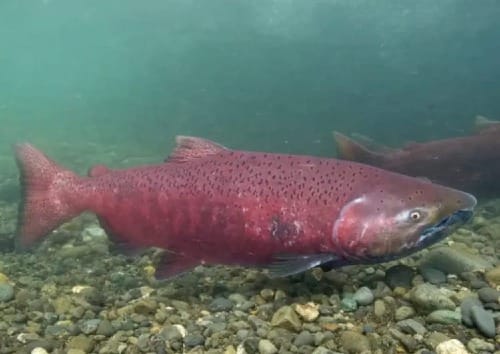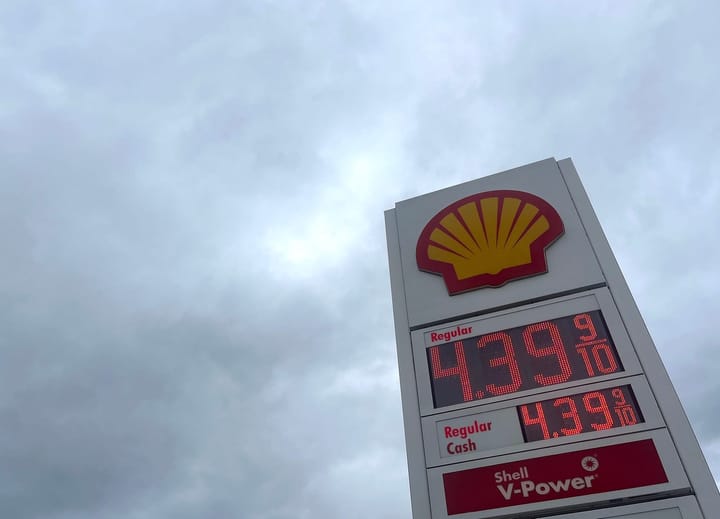Alaska, long a resource exporter, now wants to profit by leaving timber uncut and pumping carbon underground
Gov. Mike Dunleavy, in an interview, said he doesn't accept that carbon emissions cause climate change. But he still wants the state to benefit from markets that have arisen to address the problem.
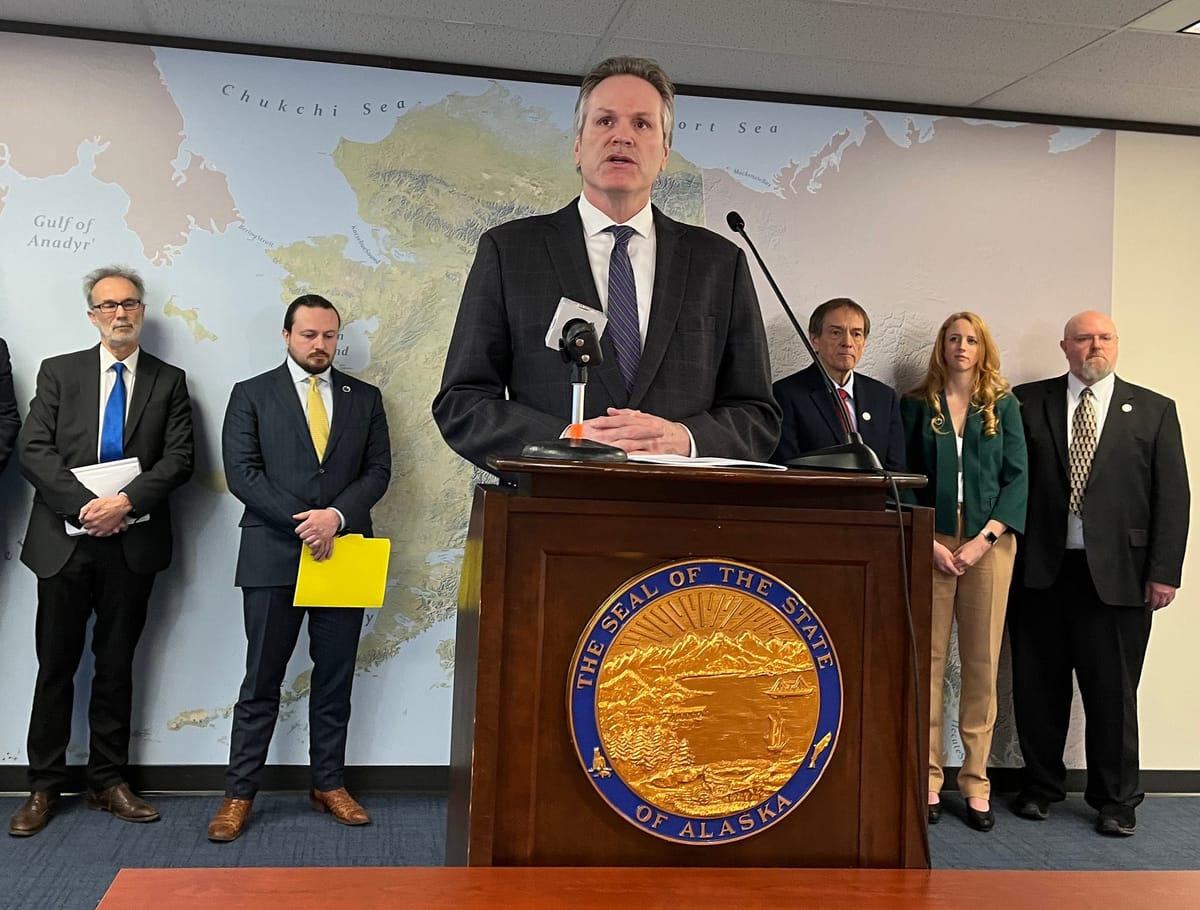
This edition of Northern Journal is sponsored by The Boardroom, a shared workspace in Anchorage. I use their array of comfy and light-filled spaces as an alternative to my home office, and I also enjoy the free kombucha and convenient access to downtown. Check out membership options here.
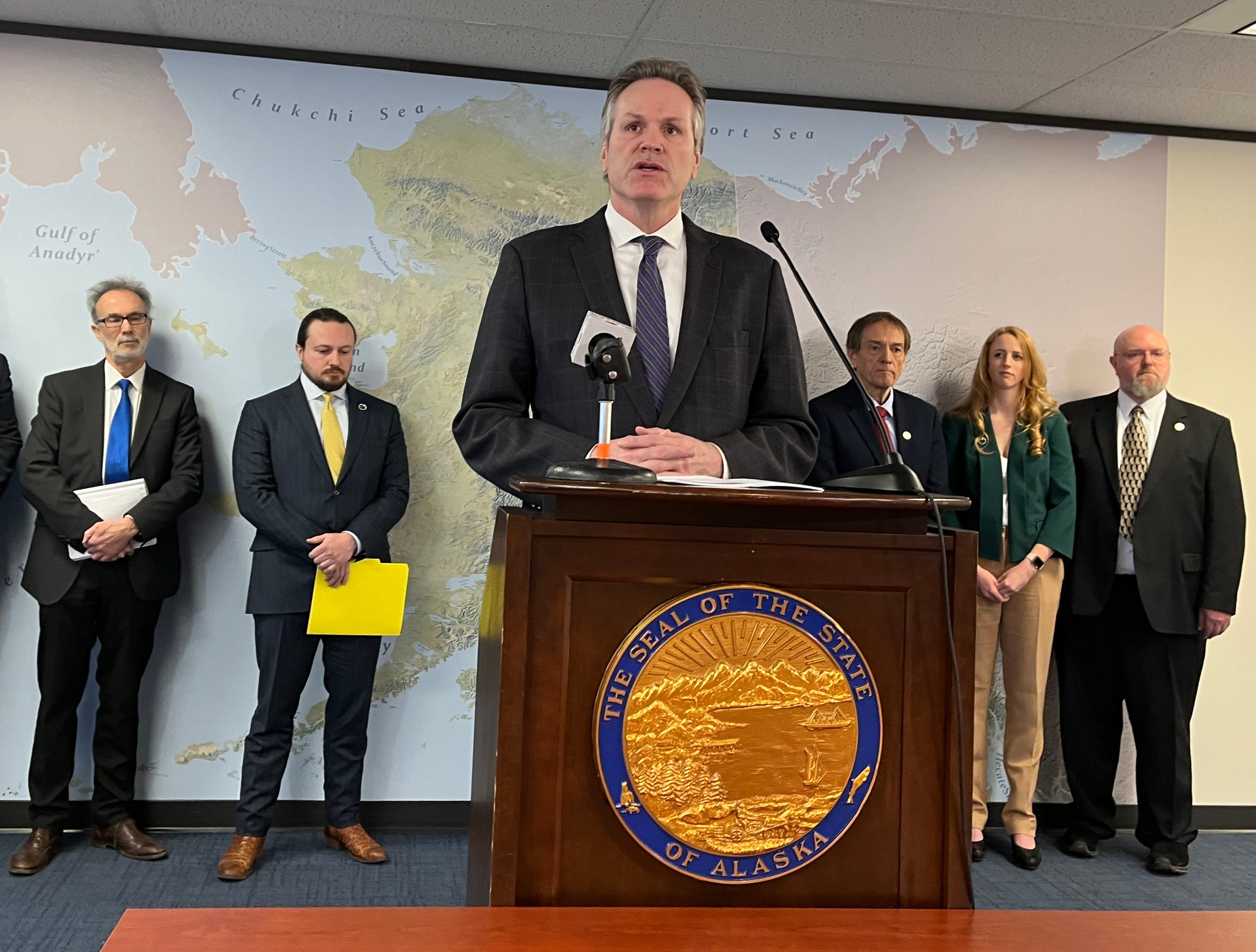
Northern Journal is a newsletter written by me, Anchorage journalist Nat Herz. It’s free to subscribe, and stories are also free to Alaska news outlets to republish through a partnership with the Alaska Beacon.
My goal is reaching the broadest possible audience of Alaskans. But if you can afford it, please consider supporting my work with a $100 annual or $10 monthly voluntary paid membership — these are currently my only sources of revenue for this project. Your support allows me to stay independent and untethered to the demands of the day-to-day news cycle. If you’ve already subscribed, thank you.
For decades, Alaska’s economy has depended on the extraction and harvest of natural resources — industries like pumping oil out of the ground, and cutting timber.
Now, Republican Gov. Mike Dunleavy wants the state to make money by leaving trees standing, and by pumping carbon emissions back into the ground.
Investment is currently flooding into those kinds of projects, driven by the increasing urgency to slow global warming by cutting human-caused carbon emissions.
Dunleavy has long rejected the scientific consensus that those emissions are causing climate change, and in his first interview detailing his carbon plans, he made clear that his views haven’t changed. But, rubbing his thumb and forefinger together, he said the growing markets for carbon storage offer the state something it needs: money.
“On this scale, potentially, we could be a game-changer,” he said. There are “a lot of people” who believe that carbon emissions are driving global warming, he added, “and Alaska is here to help them.”
Dunleavy said he will make carbon-related legislation a major priority during the upcoming legislative session — a commitment underscored by the seven state workers, including his new natural resources commissioner, who participated in the interview Wednesday.
Also present was an employee of GaffneyCline, one of three separate consulting firms supporting the Dunleavy’s administration’s push.
Enthusiasm and skepticism
There are two types of projects that the governor aims to encourage through his pending legislation, which has not yet been publicly released.
One is known as carbon sequestration and storage. Those projects aim to capture emissions from sources like natural gas processing and ethanol plants, refineries and power plants, instead of allowing emissions to vent to the atmosphere and contribute to global warming. Then, the captured carbon is permanently injected underground, and project sponsors can receive tax credits for every ton locked away.
Carbon credits projects, meanwhile, compensate landowners for using natural sources — usually trees — to pull carbon out of the atmosphere and store it. The landowners collect credits in exchange for leaving timber stands uncut; those credits can then be sold to companies that are trying to offset their continuing emissions.
Dunleavy’s efforts come as federal incentives and growing corporate action on climate change are fueling major growth in both markets. And the governor’s new plans are drawing tentative support from others with experience in the industry.
“This market will continue to grow, and we are a resource-rich state without a big population, so we need to be at the table,” said Joe Nelson, co-chair of the Alaska Federation of Natives and chair of the board of the Juneau-based regional Native corporation Sealaska. “I'm all in favor of the conversation happening sooner rather than later, and bringing the best minds to it.”
Sealaska has proven the potential value of leaving Alaska trees standing: It’s collected more than $100 million from carbon credits markets in exchange for preserving 165,000 acres of its timber stands for a century.
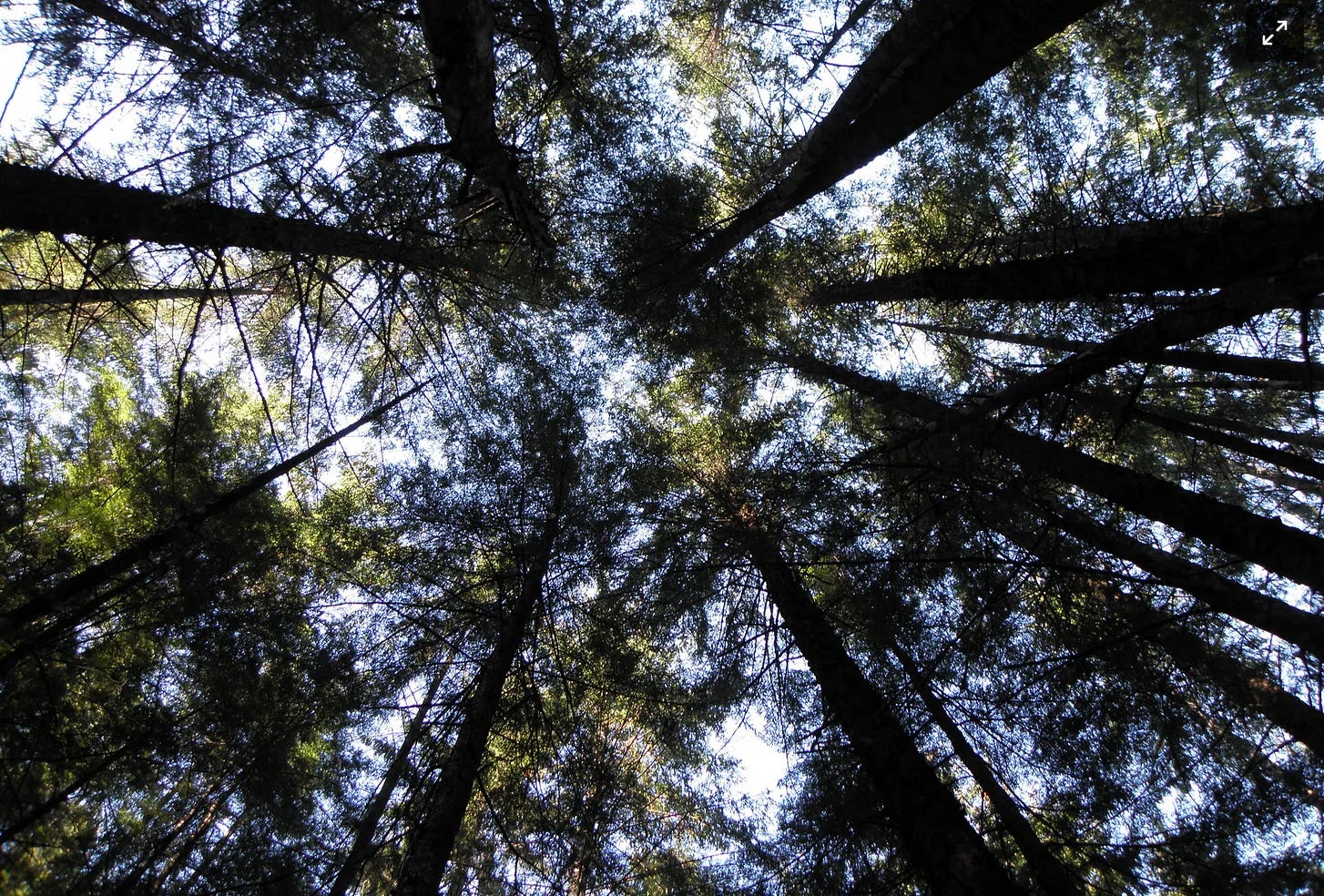
But Dunleavy’s proposal to make similar deals on state land faces skepticism from others, and even some outright opposition.
Anchorage Republican Sen. Cathy Giessel will co-chair the Senate Resources Committee likely to vet the governor’s legislation. In a phone interview Wednesday, she said she sees other issues, like schools spending and road plowing, as more urgent for lawmakers. She said she also has many unanswered questions about the governor’s carbon proposals.
“Are we locking up our land? What if there's a forest fire and those trees are destroyed? Do we have to reimburse the people who gave us the money?” Giessel asked. “I don't want to be a naysayer right out of the gate, but it sounds like it's complicated. So, we need more information.”
Indigenous climate activist and consultant Ruth Miller, meanwhile, denounced the governor’s new plans as “distractions” from more direct emissions reduction policies like energy conservation and renewable power sources.
Underground carbon storage, which is still generally unproven on a large scale, is “pretty much a pseudoscience,” she said. And leaving trees standing in exchange for allowing companies to continue emitting carbon doesn’t solve the underlying problem.
“It’s the invention of a new market and a new language that is going to waste our time at a rate that our planet cannot ecologically bear,” Miller said in a phone interview. “We need to phase out fossil fuels. Period.”
Dunleavy’s new proposals are driven by Alaska’s lingering budget deficit, and his administration is looking to carbon markets to generate, annually, hundreds of millions of dollars for the state within a few years. But he also has no interest in seeing reduced oil and gas production, which also send substantial tax and royalty revenue into Alaska’s bank accounts, he said.
“For those that think this a displacer, as opposed to an enhancer and an opportunity, they just don’t understand,” he said.
New technology, but growing investment
Storing carbon dioxide underground, rather than allowing it to pollute the atmosphere and accelerate global warming, is becoming a big business.
The growth has stemmed largely from increasingly generous tax incentives authorized by the federal government: For every ton of carbon permanently stored, companies can now earn a credit of up to $85, which President Joe Biden’s Inflation Reduction Act increased from $50.
Oil companies already inject carbon back into their underground fields to help produce more petroleum. But newer projects aim to store carbon dioxide by itself, by pumping it into rock formations like those that trap oil.
The technology is still new: As of July, the Environmental Protection Agency still had not issued a single permit for a commercial carbon injection program on a large scale, according to Wired Magazine. But some of the oil industry’s biggest players are now pursuing projects, including BP, ConocoPhillips and ExxonMobil.
"There's a lot of interest, and there's a lot of money behind these projects, and the developers want them to go through,” said Aaron Tucker, a Denver-based attorney who works on permitting for carbon capture initiatives.
Such projects, Tucker added, need the right combination of geology and industrial carbon sources to be viable.
Geologists say that Cook Inlet, the water body adjacent to Anchorage and the Kenai Peninsula, could hold substantial amounts of carbon — including in underground formations where oil has already been pumped out.
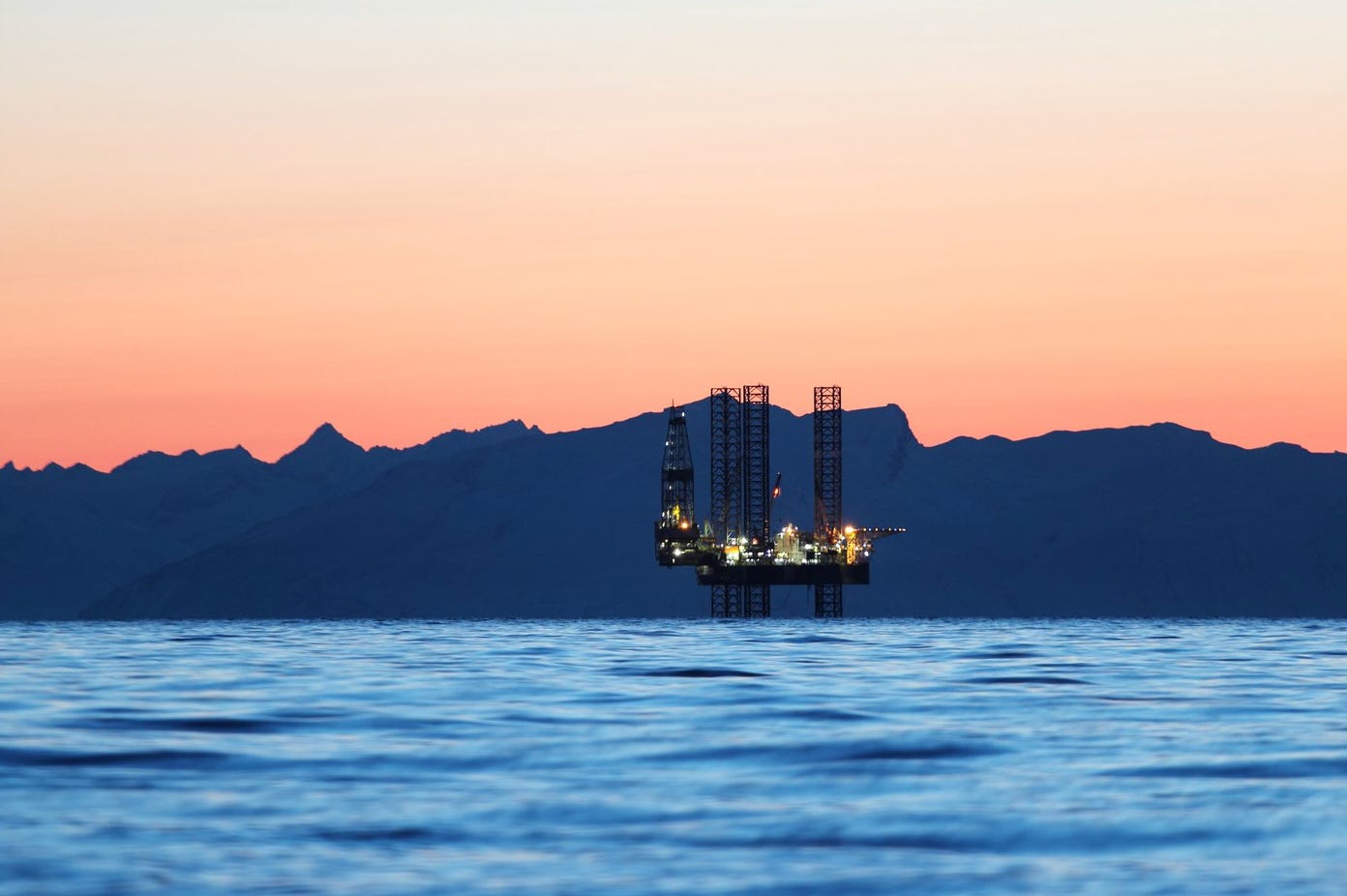
“So much fluid has been taken out of those reservoirs, the space has been made available to inject CO2,” said Scott Pantaleone, a former University of Alaska Anchorage student whose geology masters thesis examined Cook Inlet’s carbon storage potential.
One concern, Pantaleone said, is that pumping carbon into the inlet could cause earthquakes, like those associated with oil and gas activity in the Lower 48. But he examined that risk and found it to be manageable because of what he described as the relative stability of Cook Inlet’s faults.
“It's definitely something, if somebody is injecting into a field, for them to keep in mind and to assess,” he said. “But I wouldn't start ringing the alarm just yet.”
An advantage for Cook Inlet is that it’s relatively close to sources of carbon pollution in Southcentral Alaska, like power plants. But experts say that economically viable projects tend to be linked to purer streams of carbon not currently found in the Anchorage area, like those coming from ethanol or natural gas processing plants.
That could change if Alaska moves ahead with construction of a proposed massive, export-focused natural gas pipeline, which could cost some $40 billion or more. Part of the Dunleavy administration’s new contract with GaffneyCline, capped at $250,000, calls for the company to help examine the potential for carbon storage projects to pair with the pipeline, to make it more attractive to investors or gas buyers.
A separate contract with global engineering firm Stantec, capped at $500,000, aims to develop the Dunleavy administration’s legal and policy framework for its carbon storage program.
Administration officials say the program will be informed by frameworks already adopted by other states. It will likely address questions like how the state leases storage reservoirs, whether the state will accept long-term liability for projects and whether the state or the federal government will assume the primary responsibility for permitting.
Money would most likely come from the leases: Companies would pay the state for the right to use its rocks to store carbon.
“The state owns the pore space,” said Natural Resources Commissioner John Boyle. “That’s our property.”
How much such projects will affect climate change is the subject of intense debate. Some scientists and climate modelers say that carbon capture and storage can be an important component of hitting global emissions targets.
But others argue that it’s a way to put off the transformational change needed to reach those targets — particularly when proven green technologies, like wind and solar power, are plummeting in cost.
Two of Alaska’s natural resource trade groups, the Resource Development Council and the Support Industry Alliance, said they don’t yet have positions on Dunleavy’s plans. But Hilcorp, one of the state’s biggest oil and gas companies, said it’s supportive.
“We welcome the governor’s proposal on carbon sequestration and storage, and look forward to working with his administration and Legislature in the coming months,” spokesman Luke Miller wrote in an email.
Millions of acres of trees
The market for timber-based carbon credits is more developed, as shown by the multi-million dollar deals signed by Sealaska and other Alaska Native corporations.
Those agreements are set up through California’s cap-and-trade emissions reduction program, which began about a decade ago and called for that state to reduce its carbon emissions to 1990 levels by 2020.
But the California program’s legal structure isn’t workable for public land like Alaska’s, according to a previously unpublished report that the Dunleavy administration commissioned from Anew Climate, a global industry consultant.
That means that in the near-term, Alaska will likely have to look to the fast-growing but largely unregulated “voluntary market” for credits. Those credits are validated by independent, non-government auditors, and can be bought by companies or other entities trying to hit emissions targets that aren’t required by law or regulation.
Much of Alaska’s forested land is in the state’s interior regions — outside the area of the carbon-dense rainforest that’s been lucrative for Native corporations.
But experts say there’s still ample value in conserving the smaller trees in boreal forests — including in Alaska — where much of the carbon is stored in the soil.
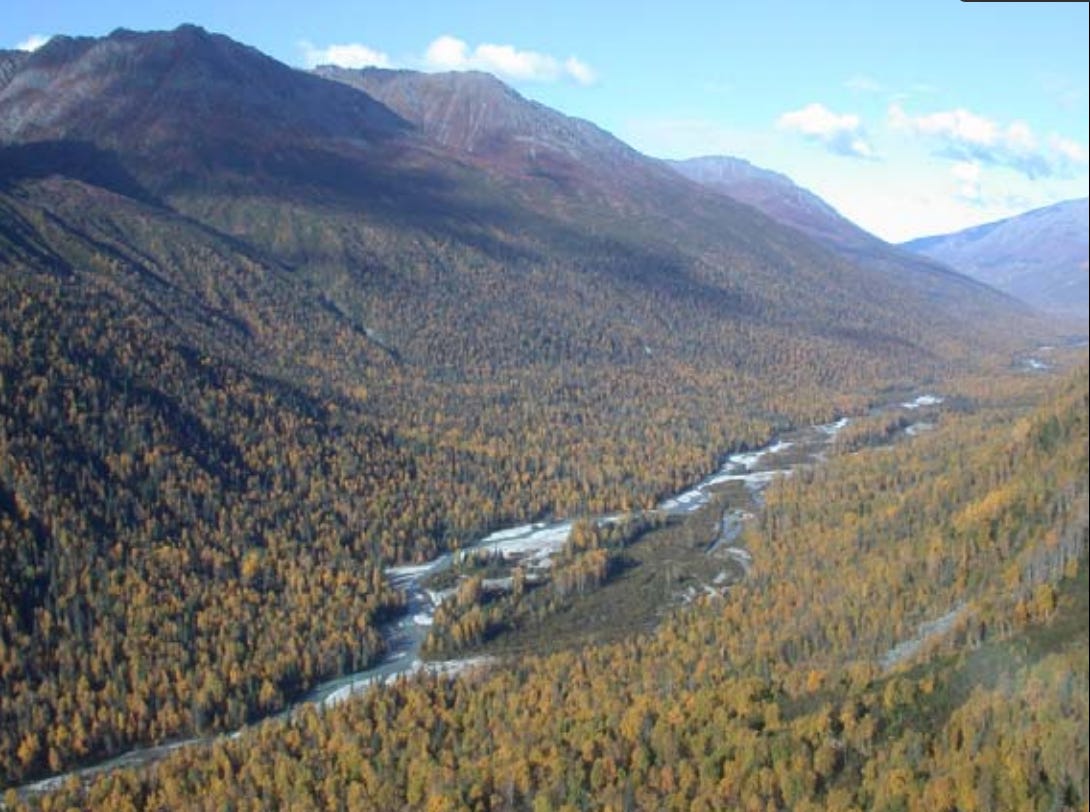
“It is a global hotspot for carbon — there are few places on the planet that have as much,” said Dominick DellaSala, chief scientist for Wild Heritage, a forest conservation group.
Dunleavy also stressed the sheer volume of forested state lands that could be legally eligible for a credits program.
“We’ve identified 45 million potential acres. Just think about that, for a second,” Dunleavy said, conceding that there’s “probably not amazing timber on every acre.”
“Sealaska was 165,000 acres,” he added. “For millions of dollars.”
Realistically, though, Dunleavy said projects will start out smaller, a point emphasized by the state’s report.
It examined three pilot projects totaling roughly 300,000 acres — one in the Mat-Su, one near Fairbanks and one in forests near Haines in Southeast Alaska — and found they could generate, collectively, credits worth some $8 million a year for the state. Notably, the report found that the state could still qualify for the credits even if timber harvesting in those areas continues at existing “sustainable” levels.
One challenge for Dunleavy’s administration may be meeting a requirement that credit projects actually save trees from being cut down or otherwise lead to more carbon being sequestered, since a large share of state lands are far from roads or harvesting infrastructure.
To qualify, said Miller, the activist and climate consultant, projects have to prove that “the trees you save were going to be absolutely, for sure, cut down.”
In spite of her overall opposition to Dunleavy’s proposals, Miller said she still sees his ideas as the “opening of a dialogue” that she welcomes. And she described the spark for that dialogue as a growing consensus about the urgency of moving the global economy away from fossil fuels — a shift underscored in Alaska by minimal interest in recent oil and gas lease sales.
“I think he’s exploring new potentially greener markets, and if that’s what it takes to eventually turn the wheels and shift the tide a little bit, great,” Miller said.
But, she added: “I’m not saying this is the answer.”
Northern Journal is a reader-supported publication. To receive new posts and support my work, consider becoming a free or paid subscriber.

